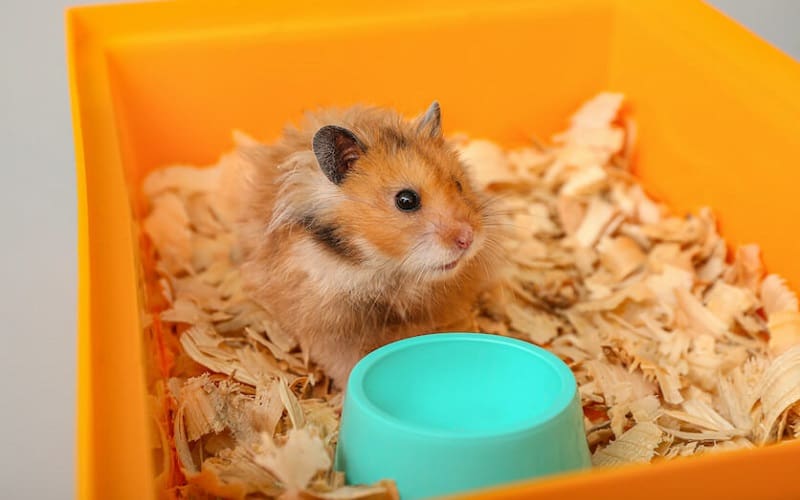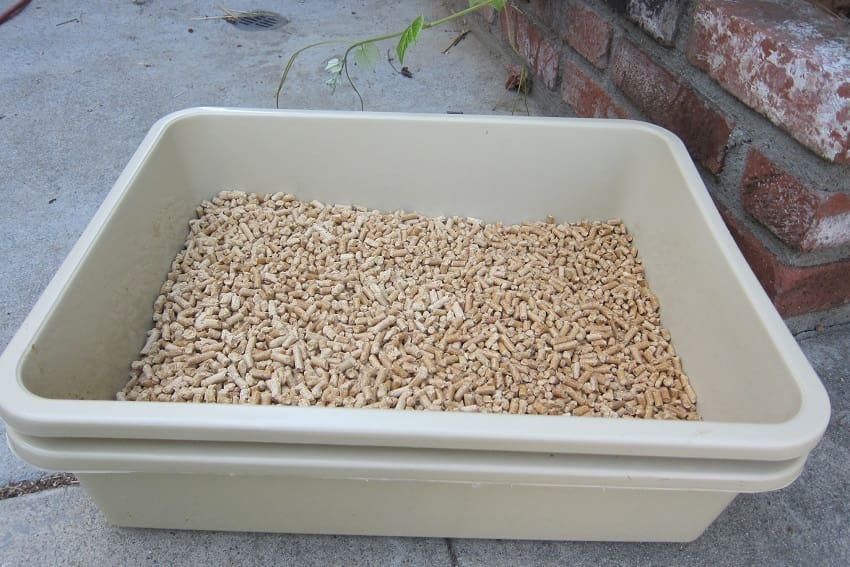Last Updated: 19 seconds ago
Uncover the unexpected versatility of cat litter beyond its primary role.
From odor absorption to household hacks, explore inventive alternative uses for cat litter in our insightful article.
You can also use cat litter for other pets in the household, but you need to be careful and aware of some things.
12 Different Uses For Cat Litter

You don’t need to own felines to use clay or crystal brands.
Besides reducing the unpleasant litter box smell, kitty litter has many other uses, some of which will leave you speechless.
- Air Freshener: Litter is one of the best choices for complete odor elimination for stinky trashcans, old books, musky closets, ashtrays, and other bad smells around the house.
- Prevent Grease Fires: If you have a barbecue, sprinkling a couple of inches of litter at the bottom of the grill can help prevent grease fires. It will absorb the grease, so it can’t catch fire.
- Clean Spills: Thanks to their superb clumping capability, clay brands are a great option to clean accident spills, oil, or water. Cover the mess and wait for the litter to absorb the moisture before sweeping it off.
- Craft Projects: Cat crystals come in a variety of sparkling, vibrant colors, making them ideal for crafting projects or decorations.
- Get Rid of Pests: Mice and rats hate cats, so a bit of used cat clay from the toilet box can keep these pests away from your house.
- Increase Traction: If you live in an area with icy roads or steps, sprinkling a bit of cat litter on the ground can prevent slips and falls. It can also help you track your car or truck better when stuck in mud, ice, or snow.
- Drying Flowers: Are you a fan of drying flowers? Then place the flowers in a box with clean cat litter. Thanks to its excellent moisture control, the flowers will dry quickly.
- Moisturize Plants: Clumping cat litter absorbs and retains moisture, making it perfect for providing moisture to shrubs, flowers, and trees.
- Remove Bad Odors from Refrigerators: If your fridge smells musty when you unplug it, cat litter can help you in the cleaning process by absorbing the unpleasant scent.
- Save a Wet Phone: While most people will think about using rice to absorb the moisture from a wet phone, kitty litter can do the same thing.
- Beauty Mask: Natural clay is an excellent choice for a beauty mask. Mix three tablespoons of unscented kitty litter with water, and then grind the concoction into a smooth paste before applying it to your skin.
- Vomit Cleanup: Cats have the nasty habit of vomiting foam or cat food on the carpet, but clumping litter can help you get rid of the nasty smell and clean up the mess quickly.
Using Cat Litter for Other Pets

When you have multiple pets, it’s natural to wonder if cat litter is safe for other animals, and if you can use it as bedding or toilet substrate.
You can use biodegradable and natural brands for hedgehogs, rats, mice, and other small pets. Non-clumping cat products can also work if they don’t contain fragrances or chemicals.
If you’re not sure what litter types to use for your small pet, you should talk about it with your vet first.
1. Using Cat Litter for Dogs
Dogs don’t have the same urge to cover their waste as cats, but it’s still possible to train a dog to use a cat toilet box and encourage proper elimination habits.
Fortunately, unscented varieties of kitty litter are safe to use around dogs since they’re made from clay or other natural ingredients. The problem lies elsewhere.
Many dogs consider cat poop to be a delicious treat. While it sounds disgusting, it’s a natural behavior, since mother dogs eat their puppies’ waste to clean the nest.
Dogs, on the other hand, can get ill if they eat infected poop from cats that go outside and eat live prey.
Moreover, some dogs can prefer eating cat litter, which can lead to minor or major stomach problems, depending on the amount ingested.
Many dogs like to play in the toilet box, scattering particles all over the house and tracking the mess.
So, while it’s safe to use cat litter for dogs, it’s not the best choice for dog owners, especially those with big dogs. If you don’t do the training correctly, it can lead to inappropriate elimination inside the house.
2. Using Cat Litter for Guinea Pigs
Guinea pigs are one of the cutest pets besides cats, and it’s easy to take care of them as long as you provide the right cage, food, and bedding.
Clumping litter is dangerous for your cavy. That’s because clay swells up when wet and can cause an intestinal obstruction if ingested by accident.
Since many guinea pigs snack on their bedding when bored, it’s not a good idea to use clay. Crystals can also cause intestinal obstruction, and they’re far too sharp for your cavy’s paws.
Common bentonite clay brands are also very dusty. And dust can harm your guinea pig’s health and damage their lungs.
Biodegradable litter made from paper and wood should be safe for your guinea pig’s cage. Just check to ensure the brand uses only natural ingredients without fragrances or chemicals.
3. Using Cat Litter for Hamsters

Hamsters like to burrow in their nests and chew their bedding, so bedding should be toxic-free and water-soluble.
So, hamster owners can use kitty litter as long as it’s a non-clumping, unscented variety, such as paper or wood pellets, or maybe horse pellets for cat litter.
Don’t ever use any clumping variety, since even the smallest ingested amount can cause severe intestinal obstruction in a tiny hamster.
Studies suggest that the bedding should be 15 inches deep to ensure your hamster’s overall wellbeing.
Since you need to change the bedding every week, it will be too expensive for most hamster owners to use cat substrate, even with excellent moisture control.
To create a cozy hamster cage and promote good litter box habits, you can use natural cat brands.
4. Using Cat Litter for Rabbits
Natural litters, such as wood pellets or paper-based brands, are suitable for rabbits. You need to check that the pellets don’t contain any phenols (these are toxic to rabbits).
As for clumping cat litter or scented varieties, you should avoid them.
Rabbits often suffer from stomach problems due to overeating, so any clumping brand can be potentially deadly for bunnies.
Also, make sure the brand you’ve chosen isn’t dusty, because too much dust will irritate your bunny’s respiratory system.
Since bunnies are so delicate, we recommend getting a rabbit substrate from your local pet store, such as hay. Rabbits love hay, and it is essential for their normal gastrointestinal function.
5. Using Cat Litter for Farret
Ferret owners shouldn’t use clay cat litter because it can damage your pet’s stomach if ingested. The crystals are far too sharp to make a comfortable nest.
The best bedding material for this small animal is recycled paper or wood pellets. So, you can use the biodegradable litter, as long as it’s all-natural.
And as this ferret owner shows, you can use kitty litter for your ferret’s toilet box to ensure your ferret can’t snack on the particles.
Things to Consider

It all comes down to the type of cat litter and the materials you’re using.
It’s essential to use only pet-safe bedding for rabbits, guinea pigs, dogs, ferrets, and other small animals. After all, the smaller the animal, the easier it is to poison it.
Most cat owners use bentonite clay. However, clay isn’t the only option for cat litter boxes, and it’s not even the best, because producing the components of clay litter is bad for the environment.
Clay-based brands are the most popular because they have a low price per month, absorb well, and provide reasonable odor control. And it’s easy to clean up the clumped urine.
Natural, non-clumping brands and crystal litter are more expensive because they generate less dust, have excellent odor control, and last longer than traditional clay litter.
In addition to the type, you should also consider whether the brand you want to use is scented or unscented.
All scented brands aren’t suitable for other pets because the scent can be toxic to guinea pigs, ferrets, rabbits, etc. Some are also bad for cats with allergies and a worse litter box odor.
Conclusion
Cat litter emerges as a surprisingly versatile ally in the home, serving purposes that transcend its traditional role.
Its efficacy in deodorizing environments, stabilizing plants, and even safeguarding walkways against ice showcases its multifaceted nature.
Its utility extends to caring for other household pets, providing a safe and comfortable substrate.
If you have some other ideas for different uses for cat litter, please let us know in the comment section below.

Olfa knows how to get things done and has a keen business sense that others admire. She’s always on the go, coming up with new ideas! Her ability to anticipate the needs of her readers and deliver information that they want is what makes CatVills such a success. She loves cuddling her cat Picaciu. He is her inspiration.
